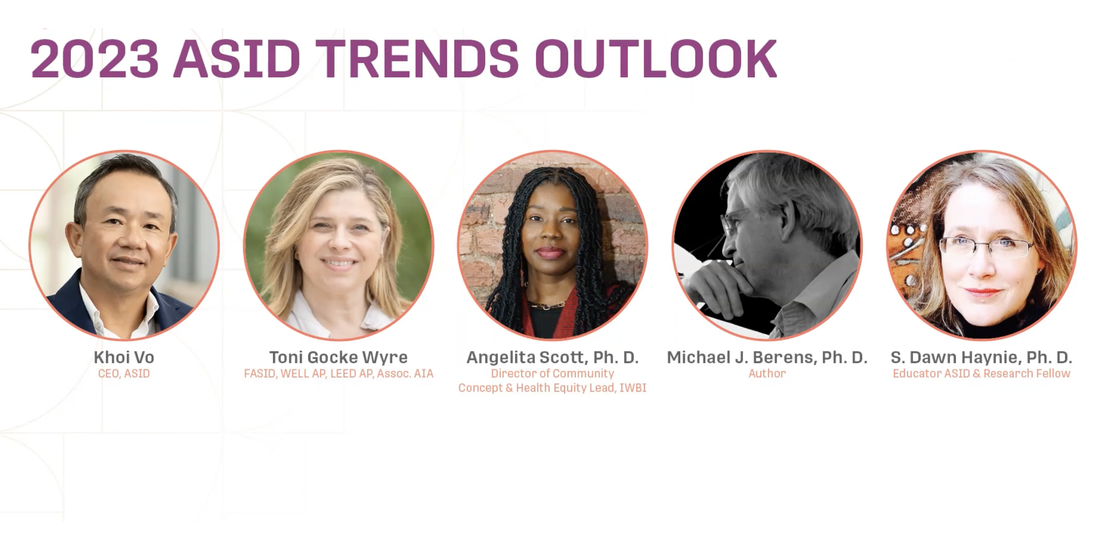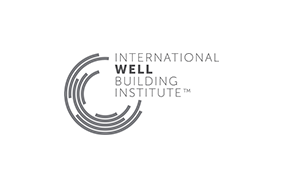Health and Equity – Two Grounding Principles for Designing Places in 2023
Insight from the latest ASID Trends Outlook puts a spotlight on the rising demand for people-first places
Published 02-28-23
Submitted by International WELL Building Institute

By Yan Tai
In predictions for the new year, many experts and groups are pointing to health and equity as two major focus areas of 2023. And there’s lots of corroborating data supporting those predictions — such as poll data showing 63% of Americans prioritize health over career, traveling, dining out and education, and 60% of American workers consider diversity, equity and inclusion as a critical factor in their company’s ability to drive success. Each figure is illustrative of the rising value we place on health and equity in 2023 and beyond.
Indeed, both of these themes – health and equity – also showed up prominently in the 2023 Trends Outlook, which was released this month by the American Society of Interior Design (ASID). The design profession has long taken notice of the need for healthier and more inclusive places, and the report highlights several of these related trends, including:
- Health and wellness as top priorities in the built environment: ASID’s report identified a growing trend towards holistic healthy living, suggesting that interior design will need to address both the mind and body. New design choices can range from the choice of colors, lighting and daylighting, and the use of plants and natural materials to adding spa-like bathrooms and retreat spaces for exercise and meditation. This trend reinforces the fact that our spaces have a profound and measurable impact on our health.
- Mental health needs are driving a new ethos in design: Modifications to interior environments can better support people’s mental health and can help aid in reducing environmental factors that can contribute to feelings of stress and unease.
- Multi-model workplaces to optimize the work experience while supporting the hybrid work arrangement: According to the report, as more remote workers return to the office, employers are seeking to make changes to the workplace environment, such as providing more private, quiet workspaces and areas to socialize.
- Diversity, equity, inclusion and accessibility are top of mind: Workplaces are quickly adapting to the diverse needs for equitable spaces, said the report. Making adjustments to support a multigenerational workforce is just one example. The report indicated more and more older adults may opt for “rewirement” instead of retirement as they settle into a hybrid work mode. On the other hand, Generation Z may seek out a more collaborative and social work environment. Employers are more aware that one size does not fit all.
- Design for Neurodiversity: Offices are becoming more inclusive and accessible for neurodivergent employees, according to the report. Design for neurodiversity is increasingly important as employers look to provide flexible and adaptable work environments that support neurodivergent workforces.
- Smart technologies to support occupant comfort and well-being in the workplace: The use of smart technologies to improve indoor air quality, personalize thermal comfort and acoustic control, sync lighting systems with circadian rhythms, and facilitate accessibility can positively affect occupant well-being and contribute to more sustainable environments. Opportunities abound to integrate smart technologies to support these workplace designs.

While sustainability and aesthetics also continue to be important design factors, according to the report, the pandemic has crystalized health and equity as top priorities in both commercial and residential design.
“The more insight we gain about the needs of the populations we are designing for, the better we can balance the design approaches to bring about positive impact on people’s mind and body,” said Dr. Angelita Scott, who was a guest speaker at ASID’s event to release the report. Scott, an interior designer by training, leads the WELL Community Concept for the WELL Building Standard at IWBI and served as a principal architect in the development of IWBI’s recently launched WELL Equity Rating. “This report is another reminder of the incredible role that design professionals play and how they can help support physical, mental and social health outcomes through inclusive and equitable design.”
View original content here.

International WELL Building Institute
International WELL Building Institute
The International WELL Building Institute (IWBI) is a public benefit corporation and the world’s leading organization focused on deploying people-first places to advance a global culture of health. IWBI mobilizes its community through the administration of the WELL Building Standard (WELL Standard) and WELL ratings and certifications, management of the WELL AP credential, the pursuit of applicable research, the development of educational resources and advocacy for policies that promote health and well-being everywhere. More information on WELL can be found here.
IWBI is a participant of the United Nations Global Compact, the world’s largest corporate citizenship initiative, and helps companies advance the UN Sustainable Development Goals (SDGs) through the use of WELL.
More from International WELL Building Institute

